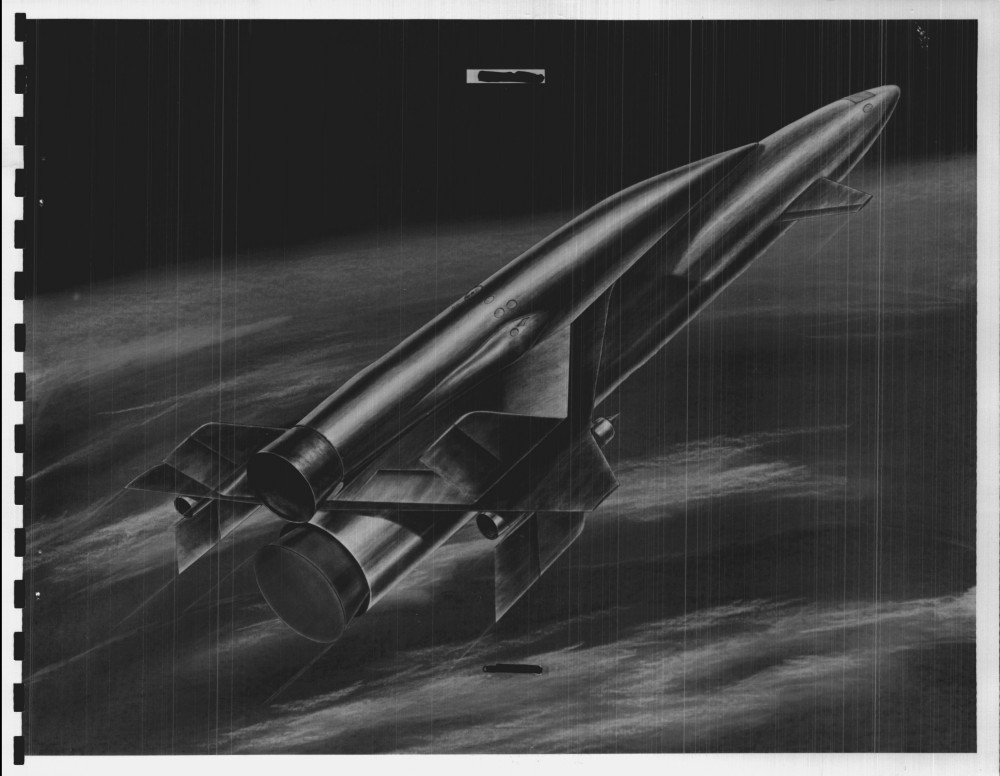In 1963-64, NASA was looking forward to a very bright future. Moon landings within a handful of years, a serious space station or two in the early seventies, manned missions to the vicinity of Mars and/or Venus probably by the early eighties, manned Mars landings not long after. Moon bases, Mars based, nuclear rockets, missions to the asteroids and the moons of Jupiter… in 1964, the rest of the 20th century must’ve looked *fantastic.*
In order to pull all that off, it was clear that NASA would need to launch a *lot* of astronauts. Consequently, a request for proposals went out to the aerospace industry to design the capability to do just that. Boeing, North American, Martin, Lockheed… a great deal of interest was shown and work accomplished. One design produced is illustrated below, a Lockheed design for a two-stage fully reusable spaceplane capable of transporting ten tons of payload or ten passengers to an orbiting space station. The booster stage had a cockpit about where you’d expect; the spaceplane, conversely, had an offset spaceplane so that the crew would have *some* sort of forward view during landing. Both stages used advanced rocket engines; the first stage also had turbojets to get it back to the launch site. As with all pre-Shuttle designs, estimates of turnaround time and minimal launch cost are impressive and a bit depressing in just how fabulously optimistic they were.
An earlier three-stage concept was shown in US Launcher Projects #5.
The future looked bright. And then… LBJ.
